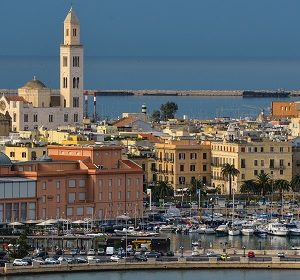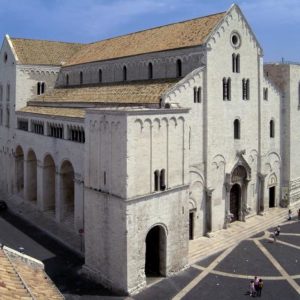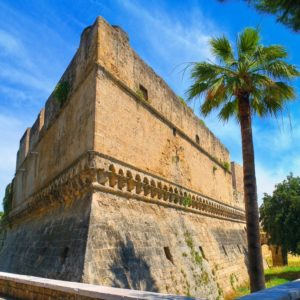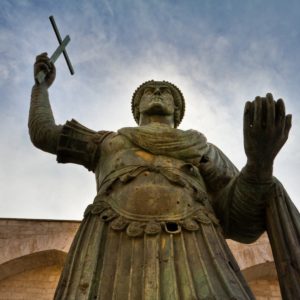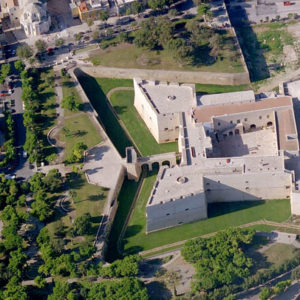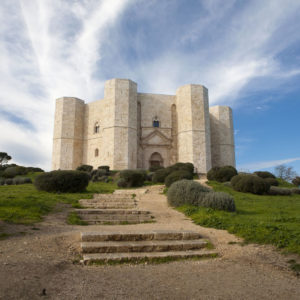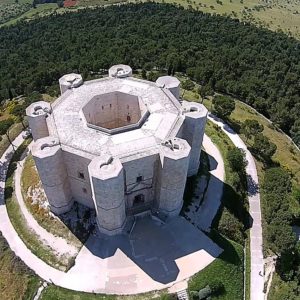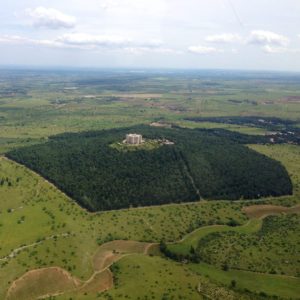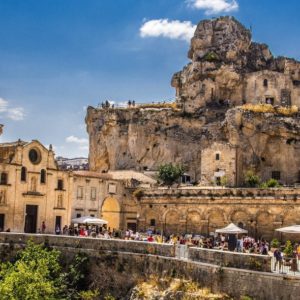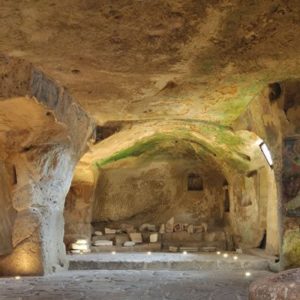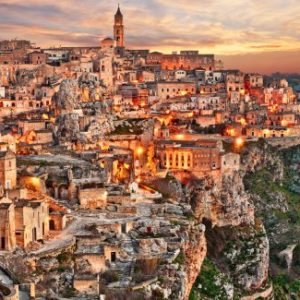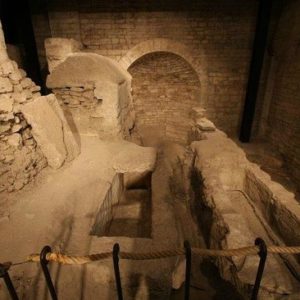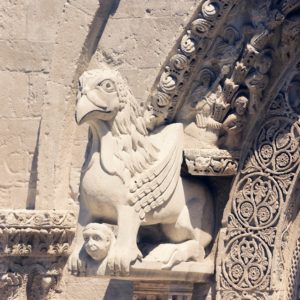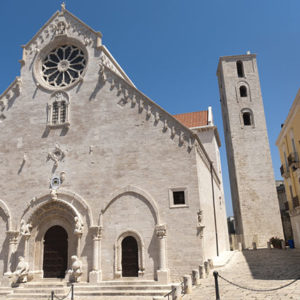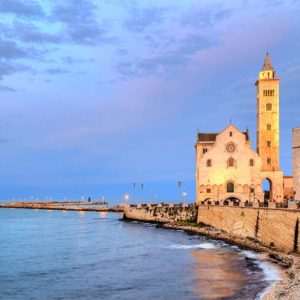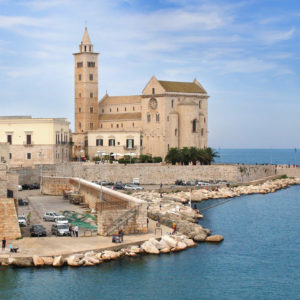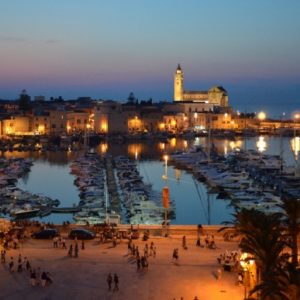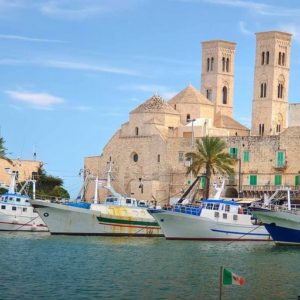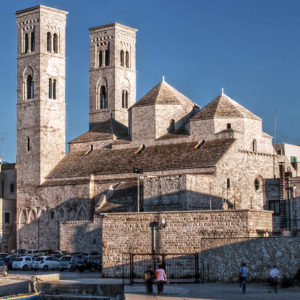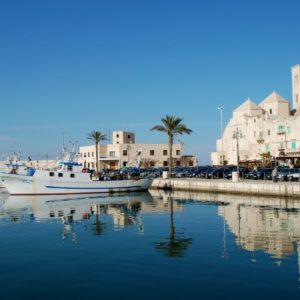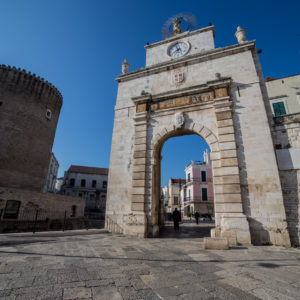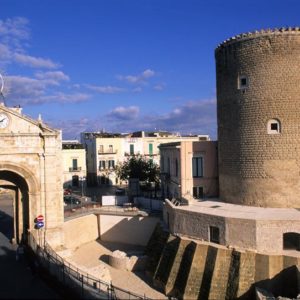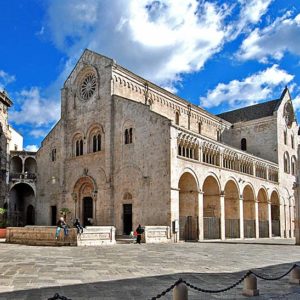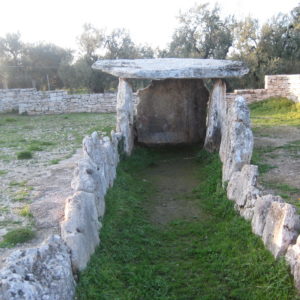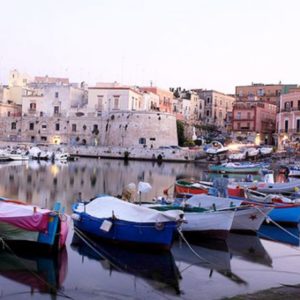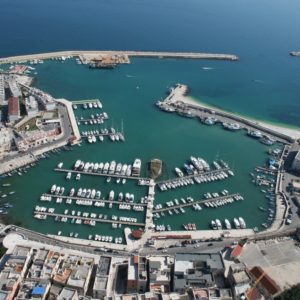What to see around
Corato is situated in an enviable position halfway between the sea and the Murgia halfway between the big centers of Bari and Barletta.
Bari, with 321,206 inhabitants is the capital of the Puglia region.
It is the ninth common Italian by population, third of the Mezzogiorno after Naples and Palermo. Its metropolitan area is the sixth of Italy with almost 1 300 000 inhabitants [4].
It is also known for being the city where the relics of St. Nicholas rest. This condition has made Bari and its basilica one of the favorite centers of the Orthodox Church in the West and also an important center of interfaith communication between Orthodoxy and Catholicism.
Bari has a solid mercantile-entrepreneurial tradition and has always been a focal point in trade and political-cultural contacts with the Middle East. Its port is the largest passenger port of the Adriatic Sea. Since 1930 the Fiera del Levante has been held in Bari, one of the main trade fairs in Italy. More recently, the city has become the headquarters of the Pan-European Corridor Secretariat 8.
Barletta is a town of 94 410 inhabitants, the capital together with Andria and Trani of the province of Barletta-Andria-Trani in Puglia.
The municipal territory is part of the Oranto valley basin and, in addition to being washed by the river of the same name, which functions administratively as a territorial border between Barletta and Margherita di Savoia, it also hosts its mouth.
The municipality of Barletta, which includes the hamlet of Canne, an archaeological site remembered for the historic battle won in 216 BC. from Annibale, it was recognized as a city of art by the Puglia Region in 2005 for its architectural beauties.
The geographical context is that of the Murgia of North-West or Murgia Alta, straddling the former provinces of Bari and BAT, an imposing limestone block, today strongly karst, which, starting from 70 million years ago, has emerged and has modified, always preserving a halo of charm and uniqueness, up to the present day. It is an exceptional territory, characterized by immense spaces that are lost in the horizon or, at times, made sinuous by hills that reach even 600 m altitude.
The Alta Murgia National Park also contains important sites of considerable historical, archaeological and palaeontological interest, given the presence of realities such as the Federician castles, first among them Castel del Monte, ancient shelters, jazzi and masserie, traces of passages of dinosaurs, etc.
CASTEL DEL MONTE (28 km from Terlizzi)
Castel del Monte is a 13th century fortress built by the emperor of the Holy Roman Emperor Federico II on the western Murge plateau in Puglia, in the current homonymous fraction of the municipality of Andria, 18 km from the city, near the town of Santa Maria del Monte, in the province of Barletta-Andria-Trani, on the top of a hill, at 540 meters above sea level It was included in the UNESCO list of World Heritage Sites in 1996. In 2014 it was the thirtieth most visited Italian state site, with 206,924 visitors.
Matera is not in Puglia but it is just 60 km from Terlizzi and On 17 October 2014 it was designated, together with Plovdiv (city located in Bulgaria), European Capital of Culture for 2019.
Matera is a town of 60 403 inhabitants, the capital of the homonymous province and the second largest city in Basilicata, as well as the largest municipality in the area of Basilicata.
Known with the names of “Città dei Sassi” and “Città Sotterranea”, it is known for the historic Sassi districts, which make Matera one of the oldest inhabited cities in the world. The Sassi were recognized on December 9, 1993, in the assembly of Cartagena de Indias (Colombia), World Heritage Site by UNESCO, the first site of Southern Italy to receive such recognition.
In 1663 it was separated from the province of Terra d’Otranto, which it had been part of for centuries, to become, until 1806, the capital of Basilicata in the Kingdom of Naples. During this period the city experienced significant economic, commercial and cultural growth.
is a town of 26,000 inhabitants of the metropolitan city of Bari. It is just 4 km from Terlizzi. It is part of the Alta Murgia National Park [. There is also the Jatta National Archaeological Museum which has increased the fame of the city thanks to the thousands of archaeological finds of the Hellenistic age preserved there, so much so that the vase of Talos, a precious piece of the collection, became a community symbol. It is also the third municipality by extension of the metropolitan city and is a city of oil as well as a city of art
Co-Cathedral of Ruvo di Puglia. It is one of the best known examples of Pugliese Romanesque and the temple was built in the first half of the twelfth century with various successive modifications. The façade is a gable with three portals: the central is enriched by bas-reliefs in the intrados and is divided into three arches; the two smaller and simpler side portals are identified by two half columns that provide support for two pointed arches. The façade is adorned with various stone artefacts among which there is a large rosette with twelve columns, variously worked and superimposed on a metal sheet worked finissimamente to the tunnel in a local shop of the XVI century. Above the rose is the sedent identified as Robert II of Bassavillae at the height of the façade the statue of Christ the Redeemer appears. The interior follows the Latin cross plan and is covered by trusses and cross vaults. The central nave is the largest and rests on two rows of columns. The bell tower of the eleventh century and the bishop’s palace are also annexed to the concathedral.
The city is famous for its Romanesque cathedral and the Swabian castle, for the production of a particular type of marble (the stone of Trani) and Moscato wine.
An important tourist destination, the city constituted a notable commercial stop until the 16th century; it is thought that the first maritime code of the western world, the Ordinaments et consuetudo maris, was promulgated in 1063.
Seat of the court, in the past it was the capital of the province of Terra di Bari and later the seat of the court of appeal of Puglia.
is an Italian municipality of 59 418 inhabitants of the metropolitan city of Bari, in Puglia. The city rises 25 km north-west of Bari, on the coast of the Adriatic Sea. In 2016 it was named European City of Sport by ACES.
It is the third municipality of the province of Bari by number of residents and the ninth of the region.
is an Italian municipality of 55 320 inhabitants of the metropolitan city of Bari in Puglia.
Bitonto is known as the city of olive trees for the extensive olive groves that surround it and the olive oil production, already renowned in the thirteenth century and perfected during the twentieth century, which is still today the most important economic resource of the city. Bitonto also gave its name to the local cultivar, Bitonto top.
On May 25, 1734, the city was the scene of the historic battle, fought between the Austrians and the Bourbons, which led to the birth of the Kingdom of Naples as an independent state.
The old town has numerous churches, including the Roman-style concattedrale Pugliese, valuable examples of Renaissance architecture, such as the palaces Sylos-Vulpano and Sylos-Calò, and baroque as the church of San Gaetano and the Chapel of the Mysteries in the church of San Domenico. Home to the first national gallery in Puglia and the largest diocesan museum in Southern Italy, in 2004 it was recognized as a city of art.
For the quality and quantity of its artistic treasures has been included in the short list, decided by the Ministry of Cultural Heritage, of the ten finalists for the race for the title of Italian City for Culture of 2020

